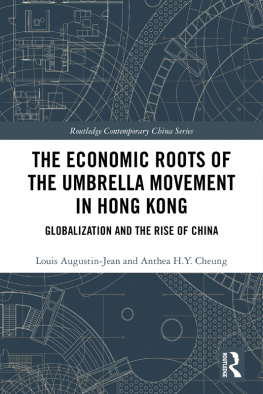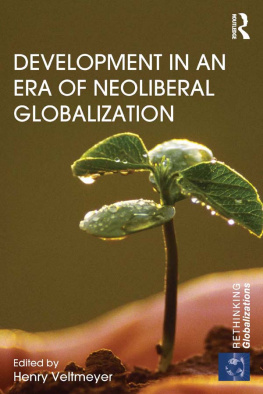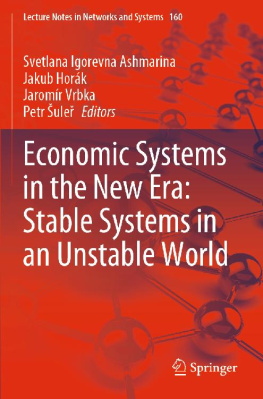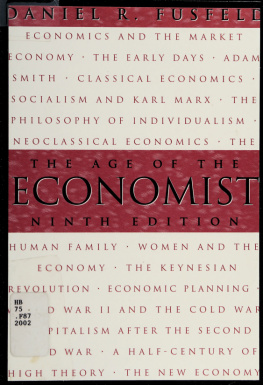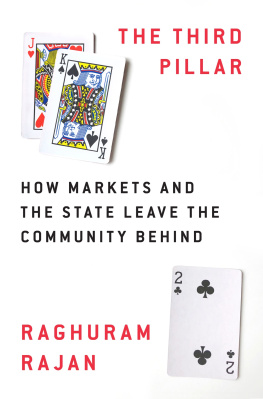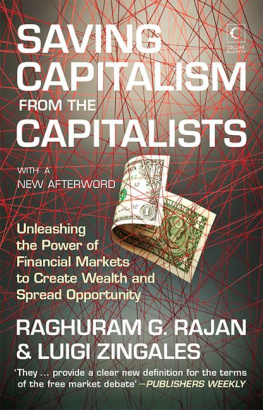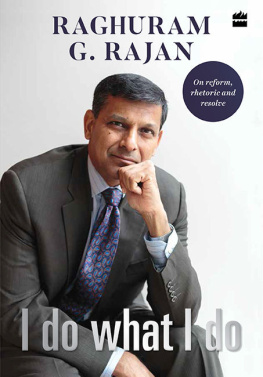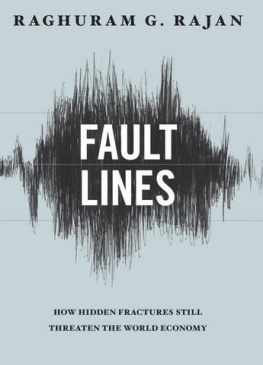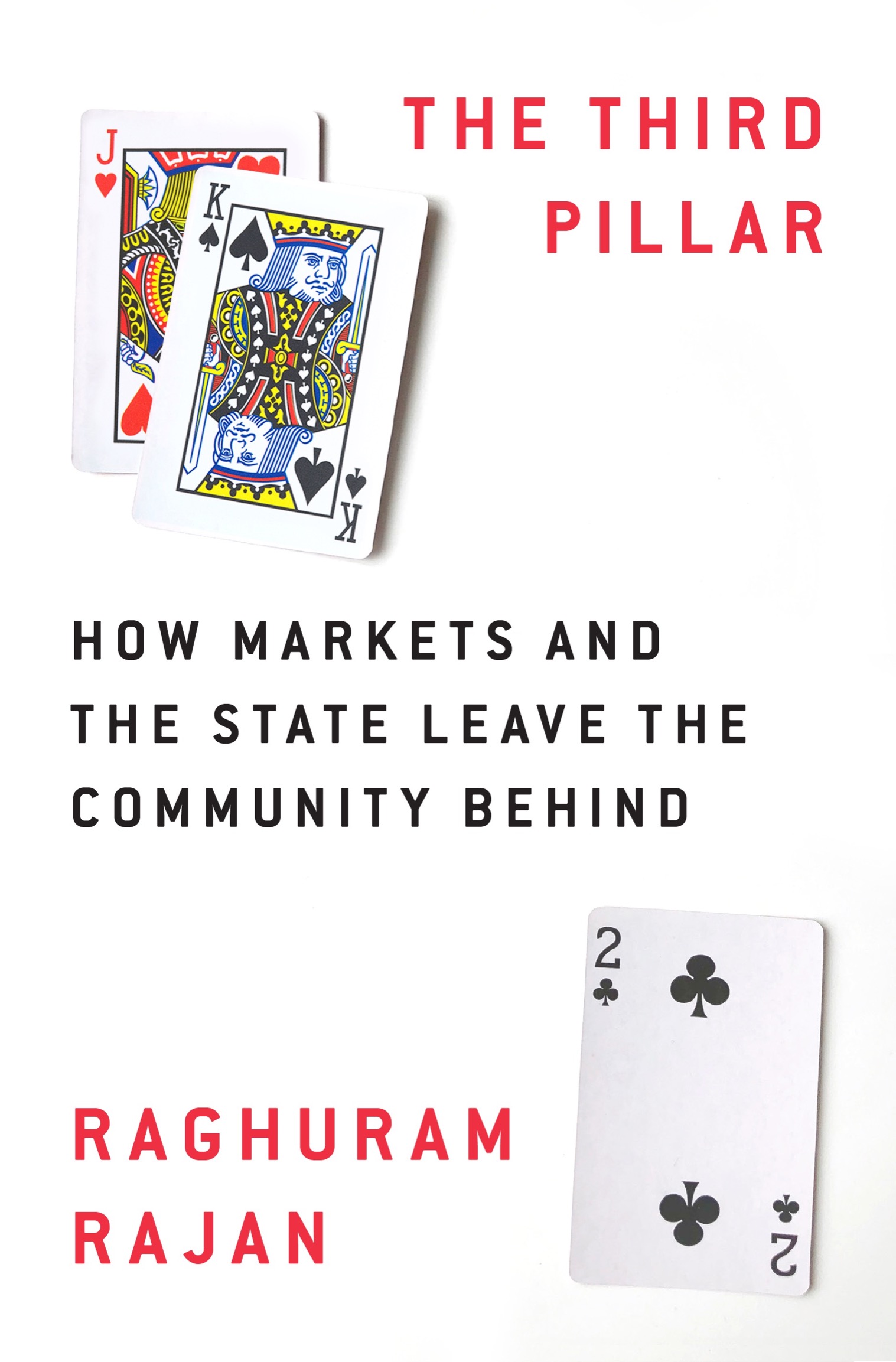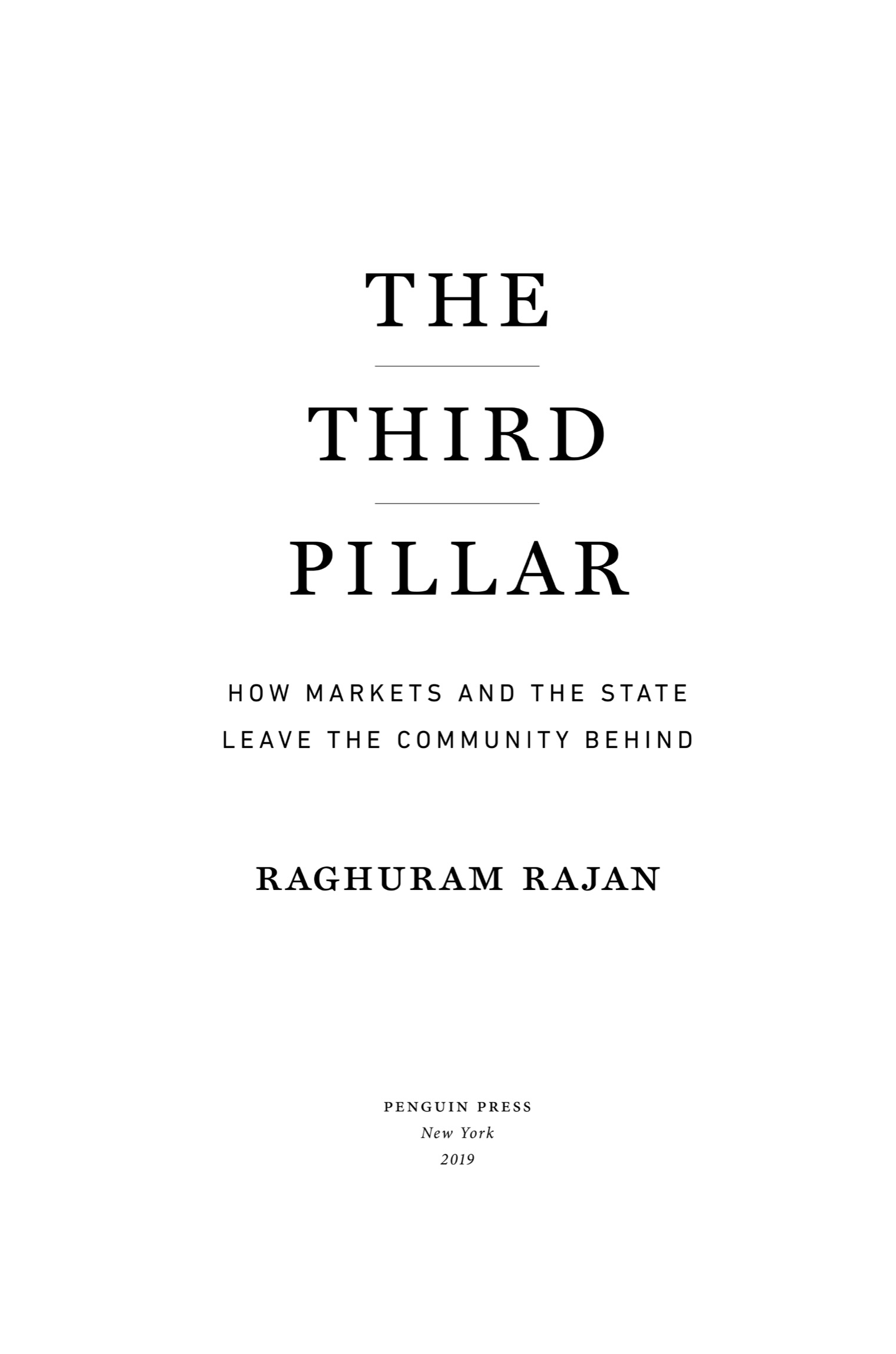Penguin supports copyright. Copyright fuels creativity, encourages diverse voices, promotes free speech, and creates a vibrant culture. Thank you for buying an authorized edition of this book and for complying with copyright laws by not reproducing, scanning, or distributing any part of it in any form without permission. You are supporting writers and allowing Penguin to continue to publish books for every reader.
Names: Rajan, Raghuram, author.
Title: The third pillar : how markets and the state leave the community behind / Raghuram Rajan.
Description: New York : Penguin Press, [2019] | Includes bibliographical references and index.
Identifiers: LCCN 2018054881 (print) | LCCN 2018058588 (ebook) | ISBN 9780525558323 (ebook) | ISBN 9780525558316 (hardcover)
Subjects: LCSH: Economic development--Social aspects. | Economics--Sociological aspects. | Capitalism. | Democracy--Economic aspects. | Communities.
Classification: LCC HD75 (ebook) | LCC HD75 .R3435 2019 (print) | DDC 306.3--dc23
PREFACE
We are surrounded by plenty. Humanity has never been richer as technologies of production have improved steadily over the last two hundred fifty years. It is not just the developed countries that have grown wealthier; billions across the developing world have moved from stressful poverty to a comfortable middle-class existence in the span of a generation. Income is more evenly spread across the world than at any other time in our lives. For the first time in history, we have it in our power to eradicate hunger and starvation everywhere.
Yet even though the world has achieved economic success that would have been unimaginable even a few decades ago, some of the seemingly most privileged workers in developed countries are literally worried to death. Half a million more middle-aged non-Hispanic white American males died between 1999 and 2013 than if their death rates had followed the trend of other ethnic groups. The additional deaths were concentrated among those with a high school degree or less, and largely due to drugs, alcohol, and suicide. To put these deaths in perspective, it is as if ten Vietnam wars were simultaneously taking place, not in some faraway land, but in homes in small-town and rural America. In an era of seeming plenty, a group that once epitomized the American dream seems to have lost hope.
The anxieties of the moderately educated middle-aged white male in the United States are mirrored in other rich developed countries in the West, though perhaps with less tragic effects. The primary source of worry seems to be that moderately educated workers are rapidly losing, or are at risk of losing, good middle-class employment, and this has grievous effects on them, their families, and the communities they live in. It is widely understood that job losses stem from both global trade and the technological automation of old jobs. Less well understood is that technological progress has been the more important cause. Nevertheless, as public anxiety turns to anger, radical politicians see more value in attacking imports and immigrants. They propose to protect manufacturing jobs by overturning the liberal rules-based postwar economic order, the system that has facilitated the flow of goods, capital, and people across borders.
There is both promise and peril in our future. The promise comes from new technologies that can help us solve our most worrisome problems like poverty and climate change. Fulfilling it requires keeping borders open so that these innovations can be taken to the most underdeveloped parts of the world, even while attracting people from foreign lands to support aging rich country populations. The peril lies not just in influential communities not being able to adapt and instead impeding progress but also in the kind of society that might emerge if our values and institutions do not change as technology disproportionately empowers and enriches some.
DISRUPTIVE TECHNOLOGICAL CHANGE
Every past technological revolution has been disruptive, prompted a societal reaction, and eventually resulted in societal change that helped us get the best out of the technology. Since the early 1970s, we have experienced the Information and Communications Technology (ICT) revolution. It built on the spread of mass computing made possible by the microprocessor and the personal computer, and now includes technologies ranging from artificial intelligence to quantum computing, touching and improving areas as diverse as international trade and gene therapy. The effects of the ICT revolution have been transmitted across the world by increasingly integrated markets for goods, services, capital, and people. Every country has experienced disruption, punctuated by dramatic episodes like the Global Financial Crisis in 20072008 and the accompanying Great Recession. We are now seeing the reaction in populist movements of the extreme Left and Right. What has not happened yet is the necessary societal change, which is why so many despair of the future. We are at a critical moment in human history, when wrong choices could derail human economic progress.
This book is about the three pillars that support society and how we get to the right balance between them so that society prospers. Two of the pillars I focus on are the usual suspects, the state and markets. Many forests have been consumed by books on the relationship between the two, some favoring the state and others markets. It is the neglected third pillar, the communitythe social aspects of societythat I want to reintroduce into the debate. When any of the three pillars weakens or strengthens significantly, typically as a result of rapid technological progress or terrible economic adversity like a depression, the balance is upset and society has to find a new equilibrium. The period of transition can be traumatic, but society has succeeded repeatedly in the past. The central question in this book is how we restore the balance between the pillars in the face of the ongoing disruptive technological and social change.
I will argue that many of the economic and political concerns today across the world, including the rise of populist nationalism and radical movements of the Left, can be traced to the diminution of the community. The state and markets have expanded their powers and reach in tandem, and left the community relatively powerless to face the full and uneven brunt of technological change. Importantly, the solutions to many of our problems are also to be found in bringing dysfunctional communities back to health, not in clamping down on markets. This is how we will rebalance the pillars at a level more beneficial to society and preserve the liberal market democracies many of us live in.
DEFINITIONS
To avoid confusion later, let us get over the tedious but necessary issue of definitions quickly. Broadly speaking, the state in this book will refer to the political governance structure of a country. In much of this book, it will refer to the federal government. In addition to the executive branch, the state will also include the legislature and the judiciary.





